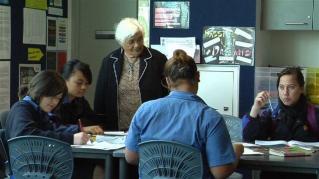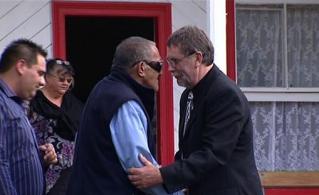-
Te Mana Kōrero Online
- Introduction
- Undertaking professional development
- Having high expectations
- Engaging Māori students
- Developing responsive and respectful relationships
-
Building partnerships
- Key research evidence
- Exploring the resources
- Some introductory points
- Fostering family-whānau-iwi involvement
- Encouraging family/whānau and iwi involvement
- Using family-whānau-iwi-community expertise
- Making families/whānau and iwi welcome
- Fostering communication
- Encouraging involvement
- Making students’ intended learning outcomes clear
- Learning opportunities
- Going into the community
- The benefits of responsive and respectful partnerships
- Building responsive school leadership
Section navigation
Fostering family-whānau-iwi involvement at the governance level
Taihape Area School Case Study: What has worked
This clip focuses on what the school has done to foster and build school-family-whānau-iwi links (particularly school-iwi) links and on what progress has been made. (“Now for a very short time we’ve had iwi participation, we’ve had whānau participation, and we’ve had it at a level where you can see change.”)
Think especially about:
- how iwi, in particular, are represented and involved in school operations, especially at the strategic or aspirational level
- the roles and responsibilities of iwi representatives at Taihape Area School
- iwi aspirations for their tamariki at Taihape Area School and what has been achieved so far
- how school and iwi representatives make contact with each other. Think particularly about the significance of welcoming the new principal on to local marae.
Note the principal’s key observation that “iwi are long-termers – they’ve been here since day one and they’re going to be here till the end. They’ve got a long-term presence in the school.” What does this mean in relation to iwi involvement in school operations?
Think how fostering family/whānau and iwi involvement at the governance level addresses the school’s requirement to “make decisions about how to give effect to the national curriculum in ways that best address the particular needs, interests, and circumstances of the school’s students and community. [This] requires a clear understanding of … the values and expectations of the community” (The New Zealand Curriculum, 2007, p. 37).
Think also about the requirement for schools “in consultation with the school’s Māori community, to develop and make known its plans and targets for improving the achievement of Māori students” (ibid., p. 44).


